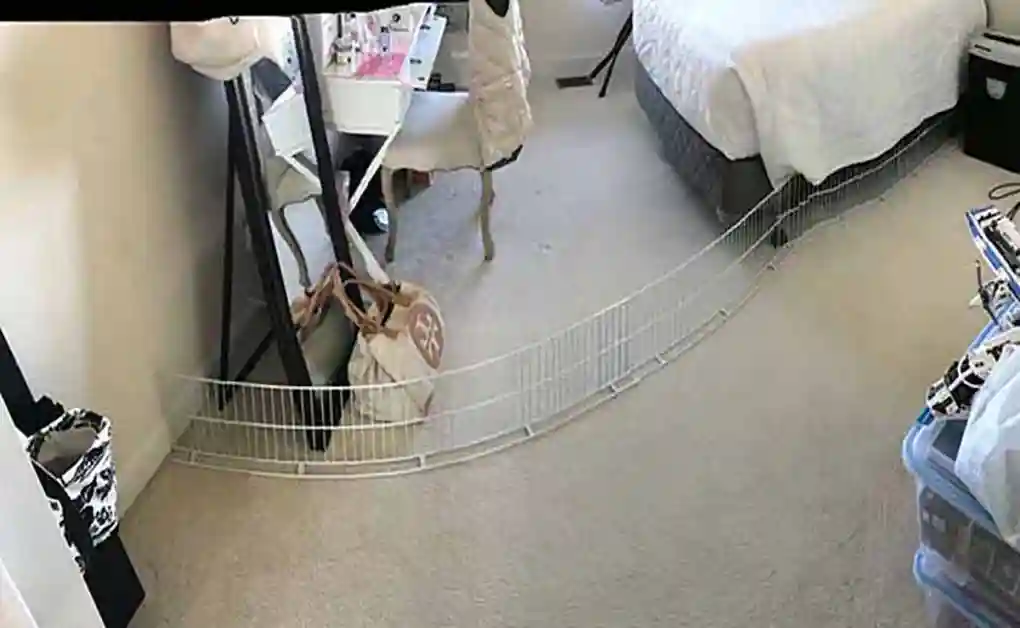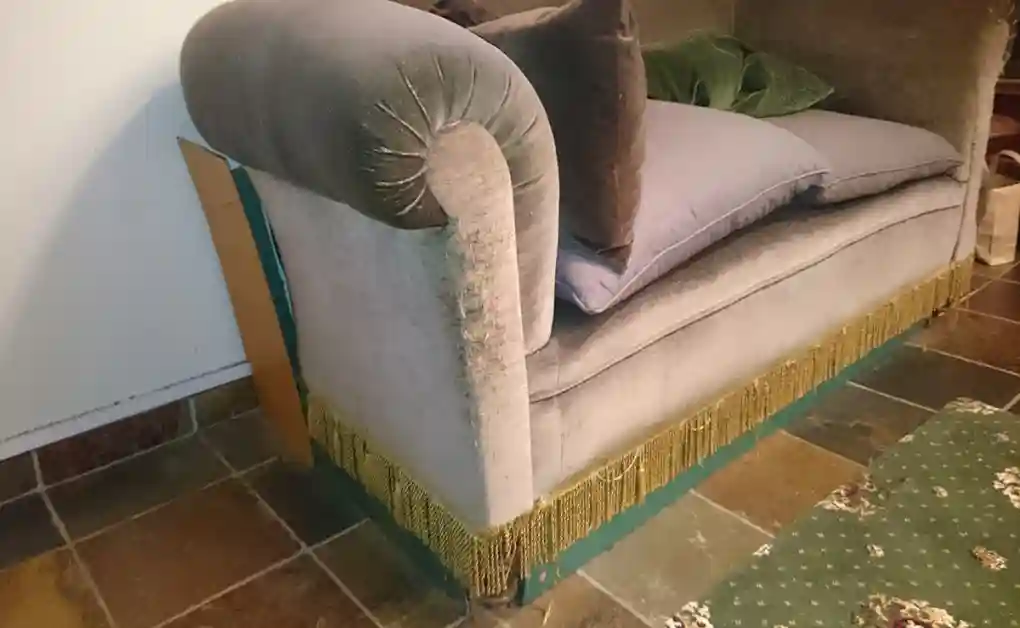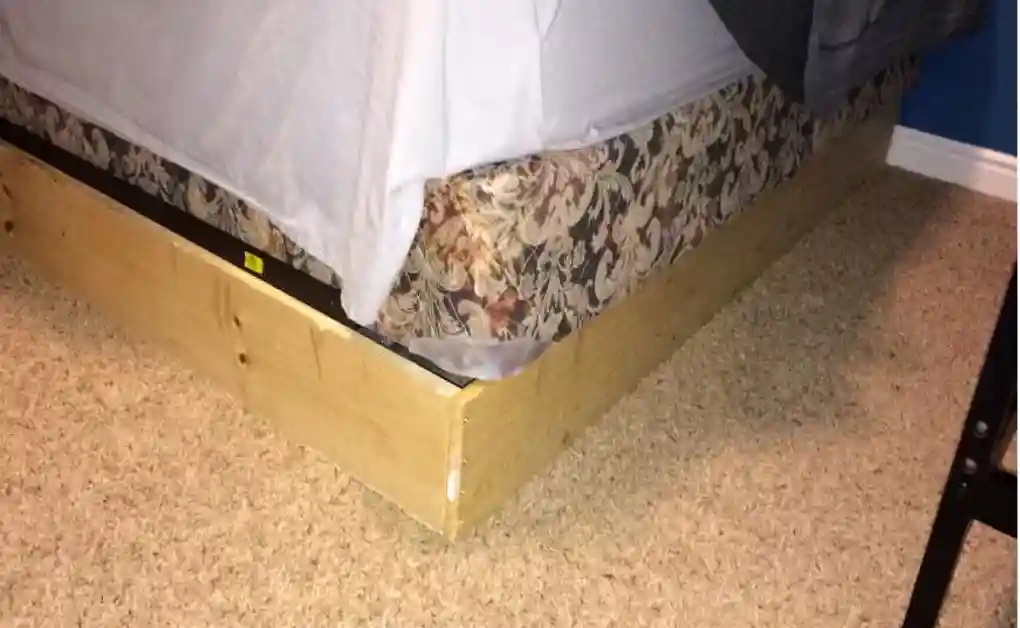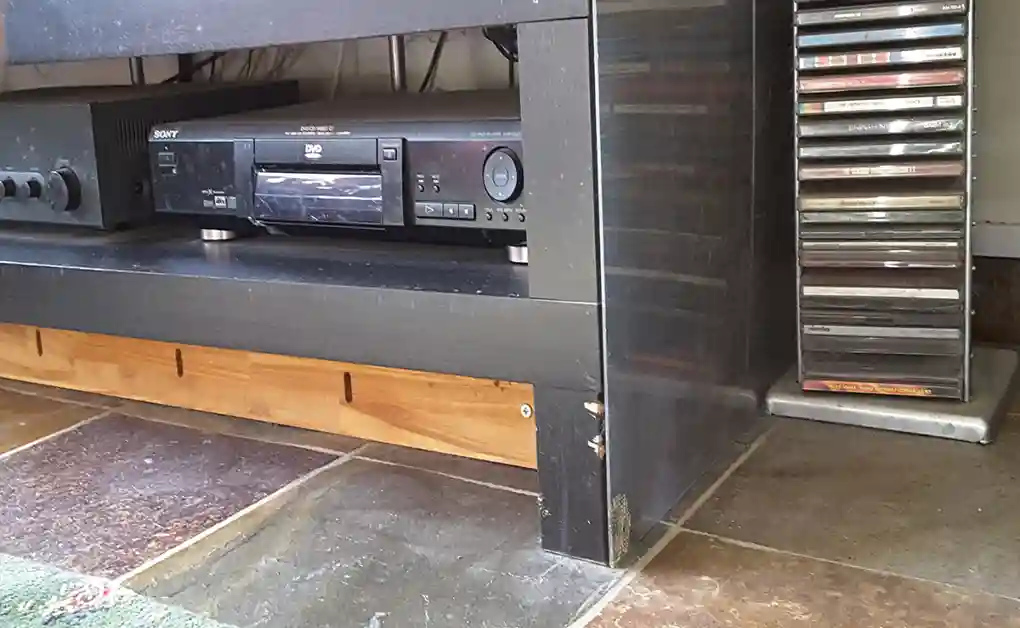 Sometimes it can be best to fence of part of a room.
Sometimes it can be best to fence of part of a room.
 Sometimes it can be best to fence of part of a room.
Sometimes it can be best to fence of part of a room.
Keeping your bunny out from under your furniture can be very frustrating. No matter how many times you say No! They return there the moment your back is turned.
Bunnies like to play and hide under furniture and seek out these places of shelter to explore and rest in. This instinct is essential to their survival in the wild, helping them avoid predators and shelter from the elements. Unfortunately, this behavior in your home can cause a lot of damage and even be dangerous for your bunny.
in this guide we look at the many spaces bunnies tend to squeeze into and how you can keep them out with some tried and tested bunny proofing you can easily set up yourself at home.
It's best not to let your bunny play under your couch as this can lead to hidden chewing damage to the legs, sides and carpet underneath. It can also be dangerous as these out of sight places can contain nails and plastic materials that can cause harm if eaten. It can be an even bigger problem if your bunny gets inside your couch!
It's also best to block off spaces under furniture where your bunny could come to harm or cause damage especially if they give access to plugs and power cables.
Below and behind the TV also need blocking off as they can be very dangerous. It only takes a moment when your back is turned for damage to occur that could lead to expensive repairs or potential risk of electrocution.
It's also best to find a way to stop your bunny going underneath your bed. Not only will they end up chewing up the carpet, sheets or wooden frames, bunnies have vastly different sleep patterns to us so if your bunny roams in your room at night their early morning chewing habits may also keep you awake.
If you let your bunny roam in your kitchen or utility space then you will also need to check it can't get behind any of your appliances.
A simple way to stop your bunny getting under your couch, bed or other furniture is to fill the gap underneath. Storage boxes can be a cheap and easy solution for this. They come in a variety of height and sizes so if you measure up the gap first then you should be able to find something that fits nicely.
 Under your couch can be a dangerous place for an unsuspecting bunny
Under your couch can be a dangerous place for an unsuspecting bunny
Another option is to lay some lengths of wood around the edges, the heavier the better. If you are happy to do a bit of DIY this can be easily built this into a simple wooden frame to make it more secure and keep it centered. This can then also be built upon with some bored at the sides to block of access and stop your bunny going around the back.
Office storage cubes can also be re-purposed to make a fence around the edge which can also be a good way of stopping your bunny chewing it as well.
These foot square wire grids can be joined then lashed to the legs to keep them firmly in place. They are cheap and you can pick up a pact in most office supply stores.

 Don't lose any sleep, bunny proof under your bed with a solid wood frame
Don't lose any sleep, bunny proof under your bed with a solid wood frame
Your bunny should never have access to areas where you have cables leading to electrical equipment such as behind your TV or a cable leading up to a lamp.
The first thing you can do is to move furniture in front of plus to help hide the plugs and cables, with a bit of rearranging you can make things a lot safer. If you do have cables trailing across a room then a lot of people have found this can be hidden away in either some split length tubing or by fitting conduit around the edge of the room.
 Bunny proofing behind your TV is essential
Bunny proofing behind your TV is essential
A simple way to be safe is to keep all your TV boxes and audio equipment together in a cabinet, if you choose one with glass doors you will be able to keep the doors shut and still use your remote controls.
If your TV is free standing you can block off the sides of your TV to stop access behind it with some large ornaments or bits of furniture. Alternatively, you can make something more permanent using sections of a pet pen, wire grids or wooden board.
Fully bunny proofing all the areas under furniture can be a massive task and it can often be a lot simpler to fence off a whole part of a room.
This can be easily done by taking a pet pen and breaking it up into sheets and using these as a fence. If you lay the out in a zigzag pattern it will help it to stand up.
We recommend getting a fence with a gate in it which will save you climbing over it all the time. When you do not want the fence out it can be packed away.

 If you want to keep your bunny out from under the spaces in your home, it's important to add lots of safe and acceptable shelters yourself
If you want to keep your bunny out from under the spaces in your home, it's important to add lots of safe and acceptable shelters yourself
If you want to keep your bunny out from under your couch, bed or other bits of furniture it's important to add lots of safe and acceptable shelters to satisfy your bunnies natural urge to keep out of harm's way. In this guide we look at what hideaways are available from tunnels to wooden shelters and show you how they can be best use to occupy your bunny.
Wicker, or willow tubes from a pet store are expensive but are a favorite with bunnies as they make a tasty chew as well. They can be messy when they fall apart and often do not last long so are great as a special treat.
Cloth tunnels are also very useful for adding a bit of shelter in the center of a room. They are light weight so can be moved about easily and can be pack away when not needed.



A cardboard box is an easy way to give your bunny somewhere sheltered and to play in that they can get their teeth into. Best of all it is free. Make sure you remove any tape and staples first.
Solid shelters made from wood can also be very useful for giving your bunny somewhere permanent to shelter in and its best to leave these out so your bunny feels safe.
Wooden as opposed to plastic shelters also make good chew toys and are substantial enough to be climbed on top of it when your bunny wants to keep a look out.

Bunnies naturally like to explore and seek out places for shelter and can crawl into very tight places. This instinctive behavior is essential in the wild to avoid predators.
Unfortunately, if your bunny plays under your they could be hurt if they brush up against nails, splinters and other man-made dangers. There may also be synthetic fabrics that will cause tummy issues if eaten.